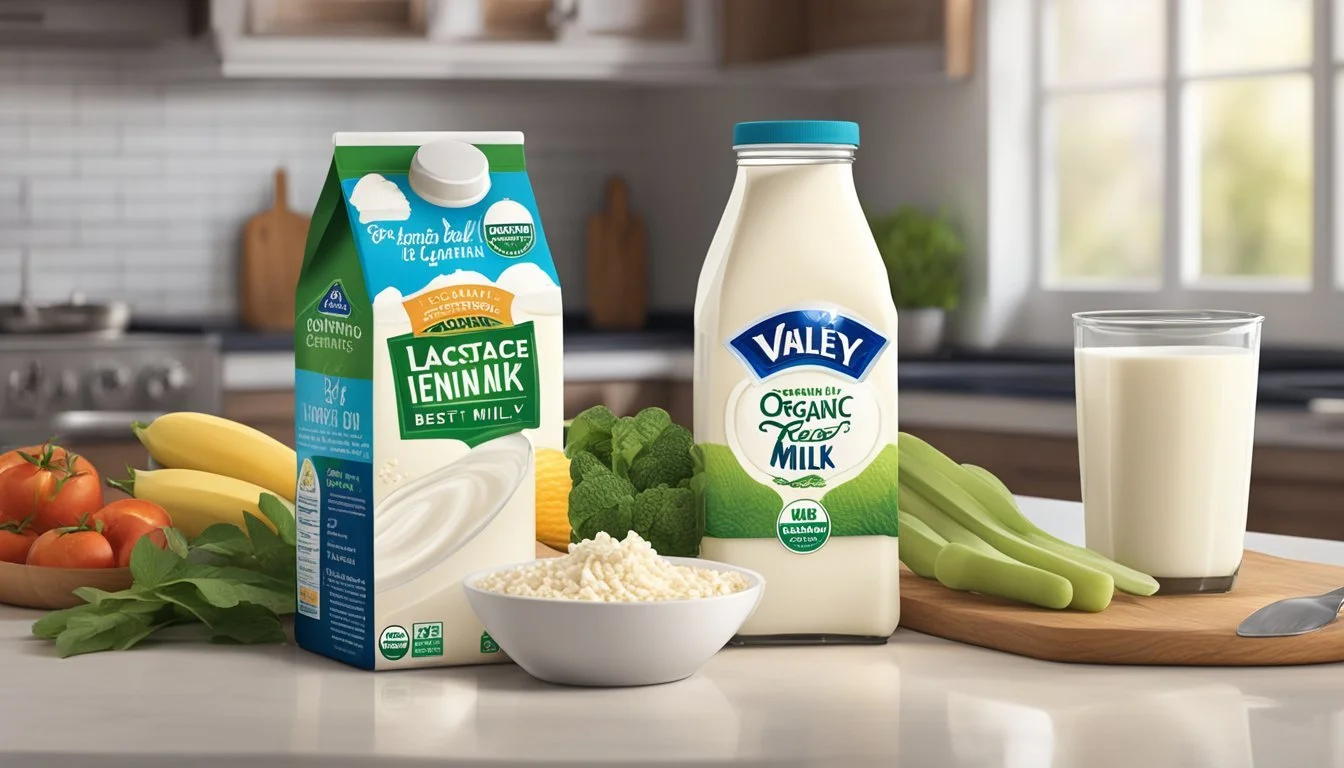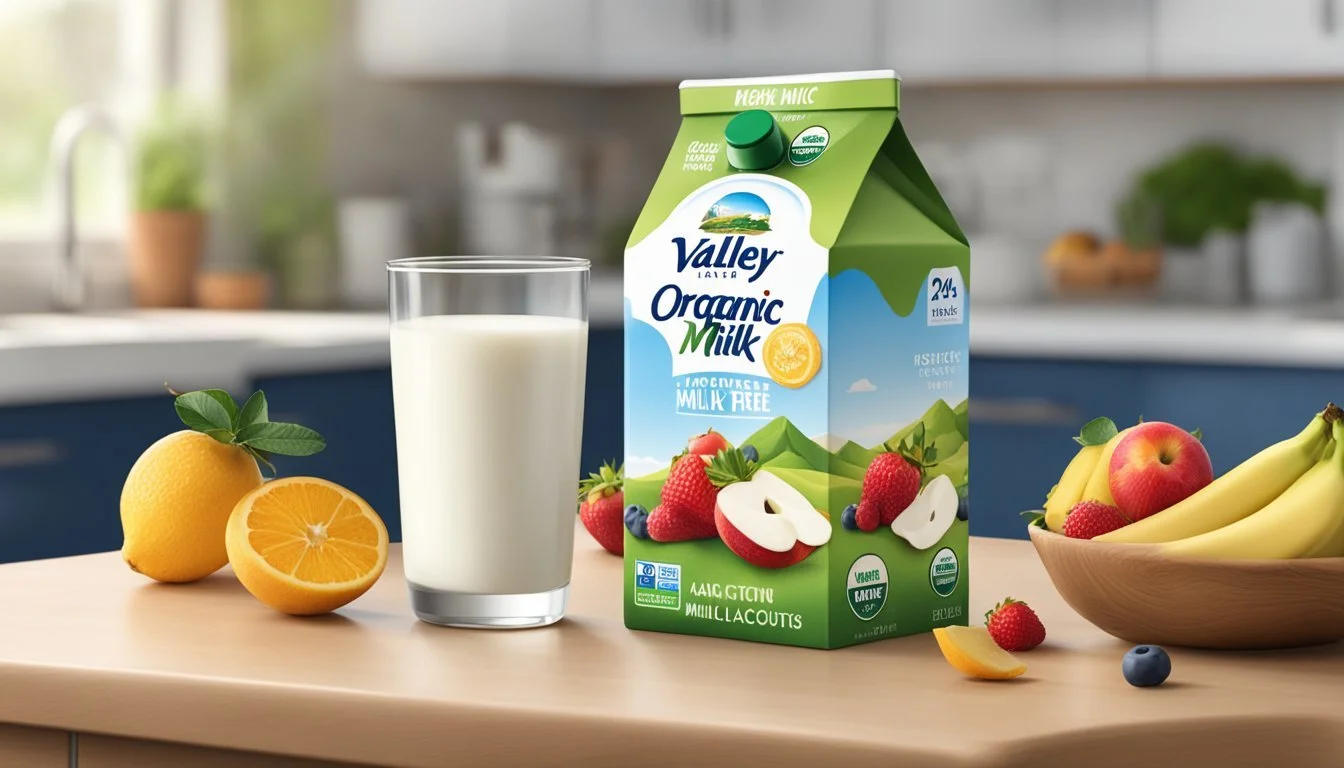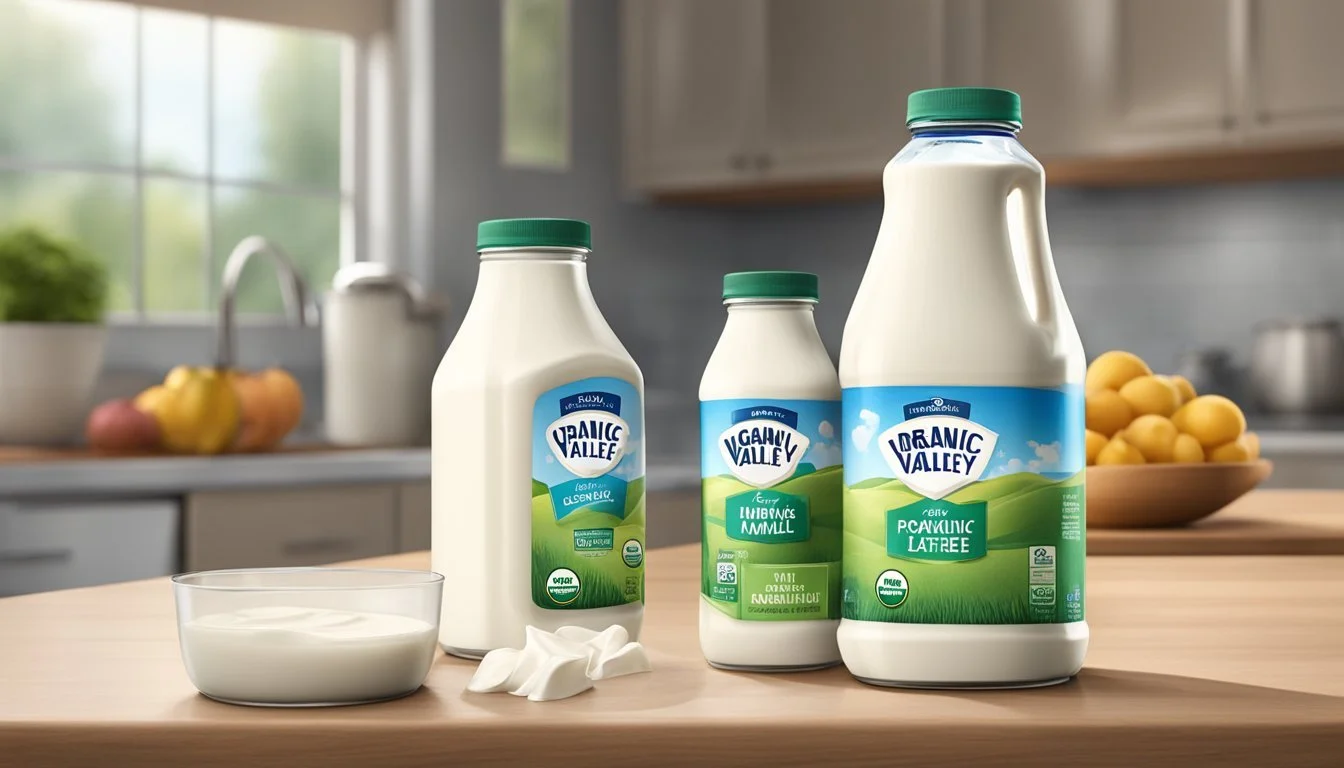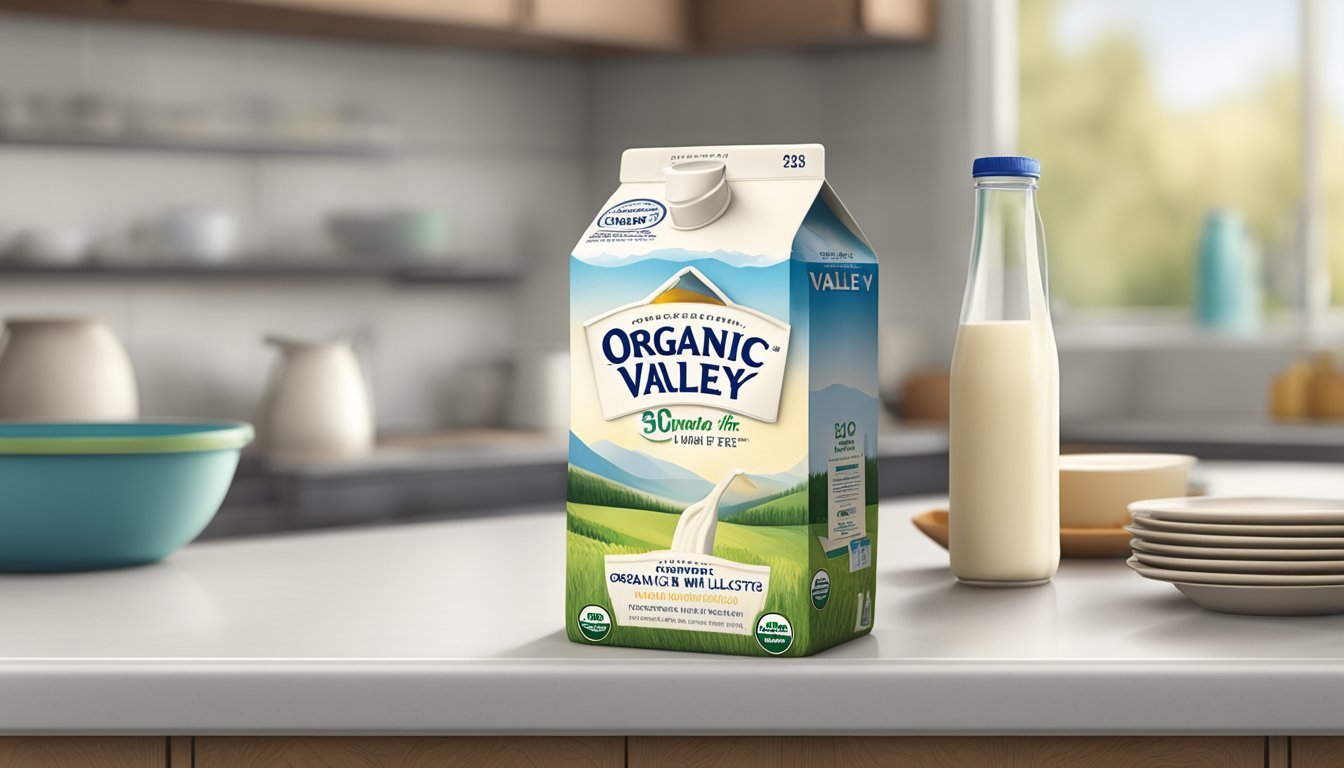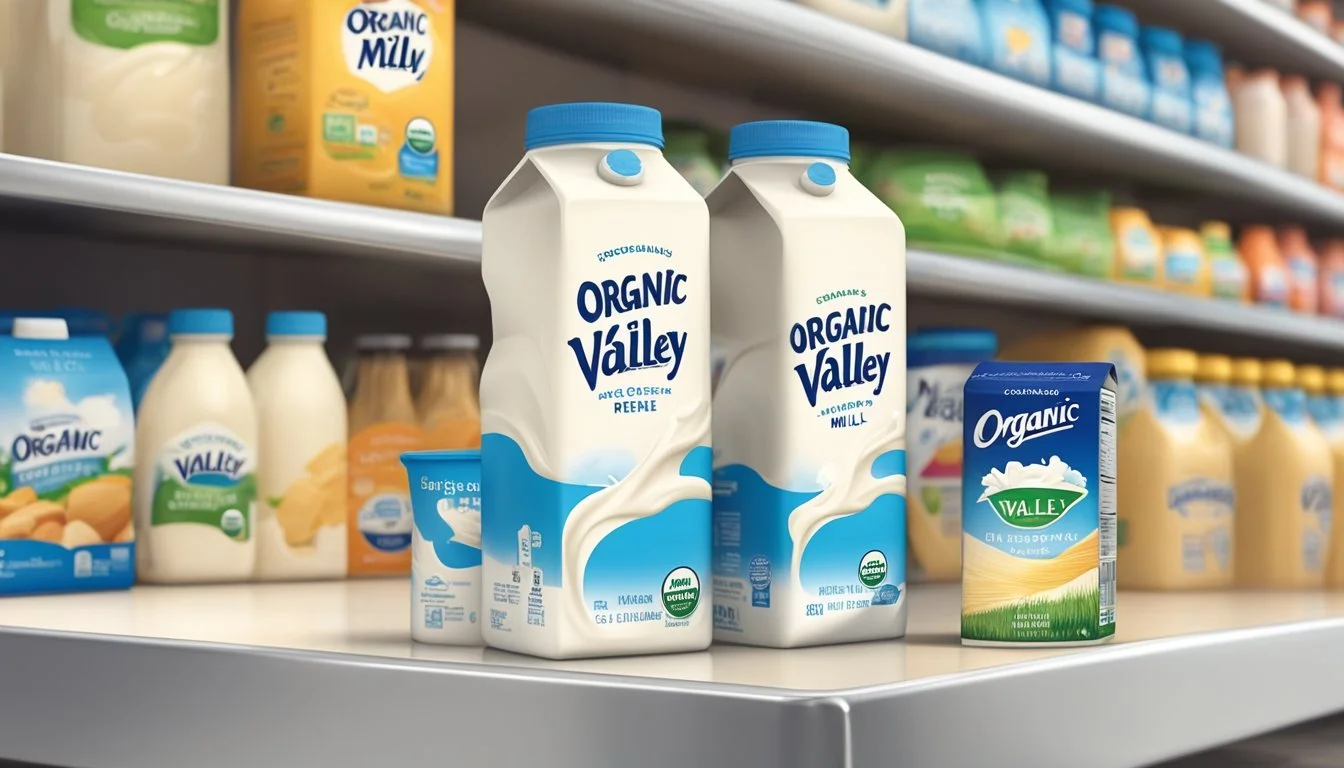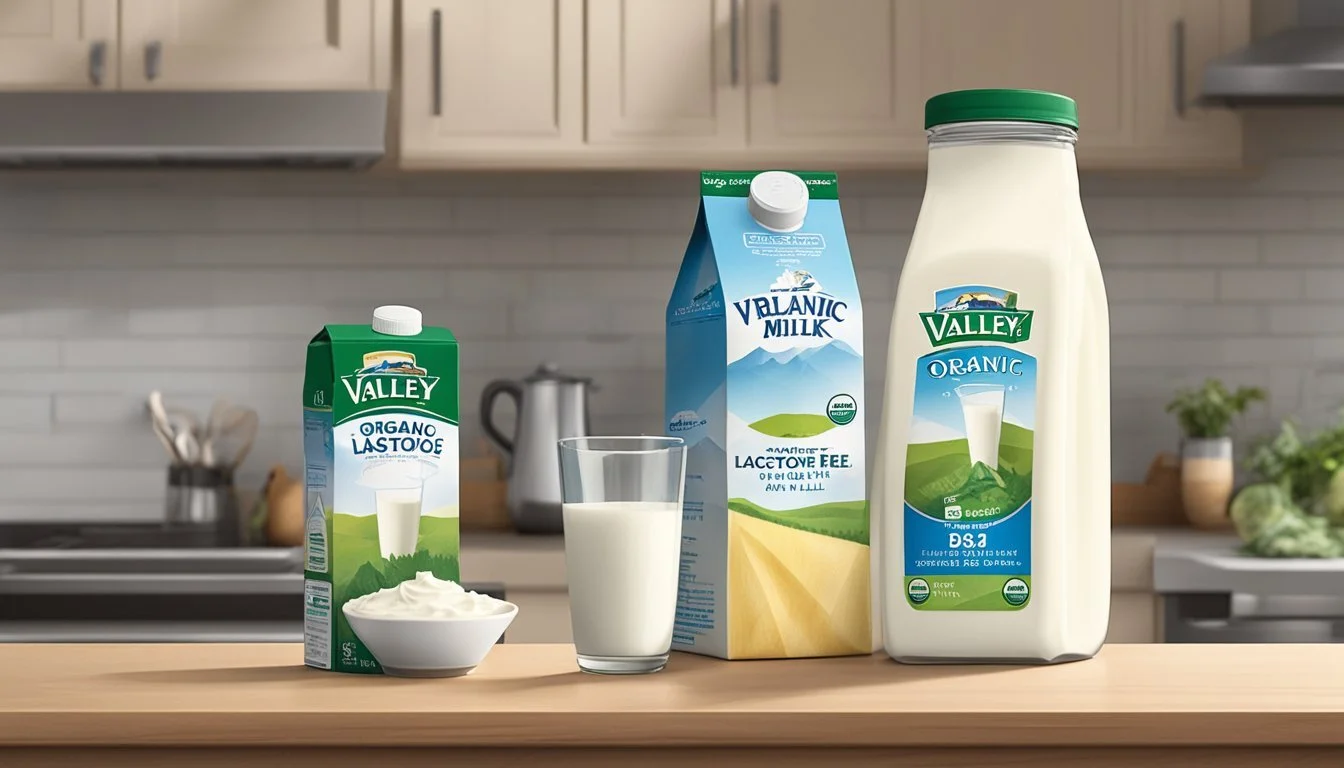How Long Does Organic Valley Lactose-Free Milk Last After Opening?
Shelf Life Explained
Lactose-free milk has become a staple in households seeking the nutritional benefits of dairy without the discomfort associated with lactose intolerance. Organic Valley, a cooperative of farmers known for their commitment to organic agriculture, produces a variety of lactose-free milk products that provide all the wholesome goodness of regular milk. Their process involves the addition of the lactase enzyme which breaks down lactose, making the milk easily digestible while retaining vital nutrients like Vitamin A, Vitamin D, riboflavin, calcium, and organic protein.
The shelf life of Organic Valley lactose-free milk is a consideration for consumers who prioritize both health and convenience. Thanks to ultra-pasteurization, a process involving heating the milk to extremely high temperatures to destroy bacteria, this milk can last longer than traditional pasteurized milk. Once opened, it remains safe to consume for approximately one week past the 'sell-by' date if it's continually refrigerated and stored at or below 40°F. Ensuring proper storage conditions is crucial to maintaining the quality and safety of the milk.
Organic Valley’s lactose-free milk not only caters to those with lactose sensitivities but also offers nutritional advantages inherent in organic milk, like higher levels of omega-3 fatty acids, which are beneficial for heart health. Consumers enjoy these added health benefits without compromising on taste or quality, as the milk comes from pasture-raised cows that are not treated with antibiotics or synthetic hormones. This reflects the brand's commitment to producing high-quality, nutritionally superior, organic dairy products.
Understanding Lactose-Free Milk
Lactose-free milk is a dairy product that caters to individuals who are lactose intolerant. It undergoes a process that removes lactose, a sugar found in milk, making it digestible for those who cannot naturally process this sugar. Lactose intolerance occurs when a person's body lacks the enzyme lactase, which is necessary to break down lactose. Consequently, lactose-free milk offers a solution by incorporating the lactase enzyme directly into the milk.
The Lactase Enzyme is crucial in the production of lactose-free milk. Manufacturers add this enzyme to regular milk, breaking down lactose into glucose and galactose, simpler sugars that are easily digestible. The enzyme ensures that people who are lactose intolerant can enjoy milk without experiencing discomfort.
Organic Valley, for example, provides an array of lactose-free milk products. Their process guarantees not only the absence of lactose but also maintains the rich nutritional profile similar to regular milk, including:
Vitamin A
Vitamin D
Riboflavin
Calcium
Protein
Here is a breakdown of the product varieties offered:
Whole Milk: Creamy and rich, ideal for those who prefer a fuller taste.
2% Reduced Fat: Less fat, but still maintains essential nutrients.
1% Lowfat: An even lighter option with fewer calories.
Skim: Minimal fat with maximum calcium and vitamin intake.
Chocolate Milk: Infused with fair trade cocoa, offering a sweet alternative with less sugar.
Lactose-free milk from Organic Valley is sourced from pasture-raised cows and is produced with the same high standards as their organic range. They ensure quality by not only removing lactose but also by adhering to organic farming practices.
The Basics of Organic Valley Milk Products
Organic Valley is a cooperative of farmers producing a range of organic dairy products, including milk. Organic milk from Organic Valley is sourced from cows raised on pasture, contributing to milk that boasts a higher level of heart-healthy omega-3 fatty acids.
The dairy products from Organic Valley are certified organic, meaning they adhere to stringent federal guidelines. The cattle are given access to organic pastures and are raised without the use of synthetic hormones, antibiotics, or GMOs. This commitment ensures a natural growth process and milk production.
A critical aspect of their produce is the attention to nutritional benefits. Products like Organic Valley's lactose-free milk offer people with lactose intolerance the chance to enjoy dairy without discomfort. The company's process includes the removal of lactose from their premium, pasture-raised milk, retaining all the nutritional benefits.
Organic Valley also uses different pasteurization techniques, such as Ultra High-Temperature (UHT) pasteurization for some products to extend shelf life. This process involves heating the milk to very high temperatures, killing almost all the bacteria and making the product last longer without spoiling.
Milk Options Benefits Pasture-Raised Whole Milk Higher omega-3 ✓ Lactose-Free Milk Suitable for lactose intolerance ✓ Fortified Milk Higher calcium and protein ✓
In summary, Organic Valley's milk products offer consumers a variety of dairy options consistent with organic standards. From enriched fortified milks to lactose-free alternatives, their products are designed to address different dietary needs and preferences while maintaining quality and taste.
Shelf Life Determinants
Organic Valley Lactose-Free Milk possesses an extended shelf life due to its processing methods, which directly influence how long the milk remains fresh.
Pasteurization Techniques:
High-Temperature Short-Time (HTST): Traditional pasteurization involves heating milk to 161°F for 15 seconds.
Ultra-Pasteurization (UP): Organic Valley Lactose-Free Milk undergoes UP, a process that heats milk to approximately 280°F for 2 seconds.
The use of ultra-pasteurization results in a product that can remain fresh for an extended period when compared to HTST pasteurized milk.
Temperature Management:
Refrigeration: Post-pasteurization, rapid cooling is essential. Organic Valley chills its lactose-free milk rapidly back down to around 40°F.
Storage: Consistent refrigeration maintains quality and extends shelf life.
Packaging Environment:
The milk is packaged in a sterile environment to prevent contamination and extend its expiration date.
Expiry Guidelines:
While Ultra-High Temperature (UHT) treatment contributes significantly to the product's longevity, consumers should always adhere to the expiration date labeled on the packaging. The expiration date accounts for the anticipated shelf life under proper storage conditions.
Handling After Opening:
After opening, the shelf life may vary based on subsequent temperature exposure and potential cross-contamination. It is recommended to keep the product refrigerated and consume it within seven to ten days for optimal quality and safety.
In summary, Organic Valley Lactose-Free Milk's extended shelf life is attributed to the advanced ultra-pasteurization process, strict temperature control, and aseptic packaging methods.
Proper Storage Practices
To maintain the freshness and safety of Organic Valley's lactose-free milk, it is essential to adhere to proper storage practices. This involves maintaining correct temperature, handling, and sealing, as well as understanding the implications of freezing.
Refrigeration Standards
Organic Valley's lactose-free milk should be consistently refrigerated at 40°F (4°C) or below. They recommend storing the milk away from the fridge door to avoid temperature fluctuations, which can accelerate spoilage. Keeping milk cold is critical to prolonging its shelf life post-opening, typically allowing it to last for 7-10 days.
Handling and Sealing
Once opened, it is important to handle Organic Valley lactose-free milk with clean utensils to prevent contamination. One should always seal the container tightly to minimize the milk's exposure to air. An airtight container helps preserve the milk's quality and extends its usability beyond the opening date.
Freezing Guidelines
One may choose to freeze Organic Valley lactose-free milk to extend its shelf life even further. However, they should ensure to:
Leave sufficient space in the container for expansion during freezing
Thaw frozen milk in the refrigerator, and use it promptly to ensure quality
Once thawed, do not refreeze as this could compromise the milk's structure and taste
Adhering to these specific practices helps in keeping Organic Valley lactose-free milk in the best condition, providing safe consumption and minimizing waste.
Assessing Milk Freshness
When it comes to assessing the freshness of Organic Valley's lactose-free milk, it is vital to pay attention to expiration dates and sell-by dates. These indicators guide consumers on the expected freshness timeline. It is important to store the milk correctly, ideally in the refrigerator at or below 40°F to prevent spoilage.
Visual and Sensory Inspection:
Color: The milk should retain its natural color. Discoloration may indicate spoilage.
Odor: Fresh milk typically has a mild, pleasant odor. A sour smell often signals that the milk has started to spoil.
Texture: The milk should be smooth. Clumps or a change in texture can suggest bacterial activity.
The freshness of lactose-free milk can also be assessed by tasting a small amount:
Taste: Any sour or unpleasant flavors may mean the milk is no longer fresh.
While bacteria content in lactose-free milk is typically lower due to pasteurization, it can still spoil. If the milk has been stored in the door of the refrigerator where temperatures fluctuate, it may spoil faster.
To ensure quality, consumers should not only rely on the expiration date. Regularly inspecting the milk's sensory qualities can help in determining its freshness. If any signs of spoilage are detected, the milk should be discarded to avoid the consumption of potentially harmful bacteria.
Health and Nutritional Value
Organic Valley's lactose-free milk maintains the essential nutrients found in regular milk, after the lactose is removed. It serves as a valuable source of organic protein, which is vital for muscle repair and growth. In addition to protein, the milk is rich in calcium, supporting strong bones and teeth.
Vitamins, such as Vitamin A and Vitamin D3, play a crucial role in this milk. Vitamin A is important for good vision, skin health, and immune function, while Vitamin D3 is essential for aiding calcium absorption and promoting bone health. Moreover, this milk offers riboflavin, also known as Vitamin B2, which is imperative for energy production and cellular function.
Here is a quick glance at the nutrient content:
Protein: Essential for repair and growth of muscles
Calcium: Supports bone and dental health
Vitamin A: Crucial for vision and immune health
Vitamin D: Assists in calcium absorption
Riboflavin: Aids in energy production
Despite the absence of lactose, the lactase enzyme introduced ensures these nutrients remain, making the milk a wholesome choice for people with lactose intolerance. The processing adheres to strict organic standards, ensuring no compromise on nutritional value.
Differences Between Lactose-Free and Regular Milk
Lactose-free milk and regular milk differ primarily based on their lactose content. Regular milk contains lactose, a sugar that can cause digestive issues for people with lactose intolerance. Lactose-free milk, on the other hand, has the lactose removed or broken down into simpler sugars—glucose and galactose—making it digestible for those with intolerance.
Nutritional Content:
The nutritional profile is fairly similar, but some lactose-free varieties have slight variations due to the addition of lactase. Both provide essential nutrients, including:
Protein
Calcium
Phosphorus
Vitamins A, B12, D
Taste Difference:
In terms of flavor, lactose-free milk may taste sweeter due to the breakdown of lactose into simpler sugars that are sweeter in taste.
Varieties Available:
Both lactose-free and regular milk can come in different fat contents:
Whole milk
2%
1%
Skim
However, lactose-free versions commonly have vitamin D3 added, especially in whole milk options, to ensure nutritional adequacy.
Shelf Life:
Lactose-free milk often has a longer shelf life compared to regular milk due to the pasteurization process, which gives it a slightly different storage dynamic.
Organic Lactose-Free Options:
Organic Valley, for instance, offers lactose-free milk that adheres to organic farming standards. These standards ensure the milk comes from cows not treated with antibiotics or hormones, and that maintain access to pasture.
In conclusion, while both types of milk serve similar nutritional purposes, lactose-free milk provides a digestible alternative for those with lactose intolerance and may come with added vitamins and a longer shelf life.
Organic Farming Practices
Organic Valley operates on the principles of organic farming, a method that emphasizes the use of natural processes and materials to raise crops and livestock. This approach prohibits the use of toxic pesticides, GMOs (Genetically Modified Organisms), and synthetic fertilizers on the pasture where cows graze. Instead, they rely on organic-approved substances and practices to maintain soil fertility and control pests.
The livestock at Organic Valley are raised in accordance with USDA Certified Organic standards. These guidelines ensure that cows have access to pasture during the grazing season, which is a minimum of 120 days per year, and receive at least 30% of their diet from grazing. The feed provided is organic, free from pesticides and GMOs, and sourced to support their health without the use of hormones or antibiotics.
Organic Farming Practices at Organic Valley:
Pasture: Cows graze on organic pastures that are free from synthetic chemicals.
Feed: The feed is 100% organic and does not contain GMOs or toxic pesticides.
Animal Health: Cows are raised without the use of hormones or antibiotics.
Environmental Stewardship: Organic farming encourages biodiversity and soil health, and reduces pollution from agricultural runoff.
Organic Valley's commitment to these practices ensures the production of high-quality organic dairy products, including their lactose-free milk, offering consumers a healthy alternative that aligns with environmentally conscious values.
Benefits of Organic Valley Lactose-Free Milk
Organic Valley Lactose-Free Milk brings a host of advantages, especially for those with lactose intolerance. Its unique attributes make it a valuable addition to a balanced diet.
Nutrient-Rich: It contains key vitamins such as Vitamin A and D, along with minerals like calcium, which are essential for maintaining healthy bones and teeth.
Lactose-Free: By including the lactase enzyme, lactose is broken down, making this milk a comfortable choice for individuals with lactose intolerance.
Organic Component Importance Riboflavin Supports energy production Organic Protein Builds and repairs body tissues Omega-3 Fatty Acids Promotes heart health
No Artificial Hormones: Organic Valley ensures their cows are not treated with artificial growth hormones, which offers peace of mind for consumers looking to avoid these substances.
Antibiotic-Free: The milk is sourced from cows that are raised without the use of antibiotics, aligning with consumer health concerns and sustainability efforts.
Shelf Life: Ultra-pasteurization extends the shelf life of the milk, making it a convenient option for those who want to stock up, while still respecting food safety.
Sustainable Farming Practices: Organic Valley is committed to environmentally friendly farming, which supports biodiversity and soil health.
In summary, Organic Valley Lactose-Free Milk offers nutritional benefits and caters to dietary needs without compromising on the quality and integrity of the milk, making it a trustworthy choice for consumers.
Common Uses in Recipes and Cooking
When it comes to cooking and baking, lactose-free milk like Organic Valley Lactose-Free Milk can be used as a direct substitute for regular milk in a variety of recipes. Chefs and home cooks often utilize it in both sweet and savory dishes, ensuring that lactose-intolerant individuals can enjoy a broader range of meals without discomfort.
Dairy Alternatives in Baking
Cakes and Breads: Lactose-free milk can be included in cake or bread recipes where milk is typically called for.
Buttermilk Substitute: By adding vinegar or lemon juice to lactose-free milk, one can create a buttermilk alternative suitable for pancakes and other baked goods.
Cooking Applications
Creamy Sauces and Gravies: Lactose-free half & half can enhance sauces and gravies with a smooth, creamy texture.
Hot and Cold Beverages: It's perfect for coffee, smoothies, and shakes without the lactose.
Cheese Making
While not typically used for traditional cheese making due to the required conversion process, lactose-free milk can still be used in the preparation of various cheese-containing dishes, such as:
Cheese Sauces: For lactose-intolerant patrons, use lactose-free milk to make smoother, creamier cheese sauces for pasta or vegetables.
Cheese-Based Soups: A great base for soups that require a milky or creamy element without any lactose issues.
Lactose-free milk offers comparable nutritional benefits to regular milk, such as calcium and vitamins, and is versatile in kitchen use. It's an excellent option for those seeking lactose-free alternatives without compromising on taste or texture in their cooking and baking endeavors.
Special Considerations
When choosing Organic Valley Lactose-Free Milk, consumers with lactose intolerance or dairy allergies should pay close attention to labeling. Understanding the product's grade and allergen information ensures safety and quality.
Lactose Intolerance and Dairy Allergy
People with lactose intolerance lack the enzyme lactase, which is necessary to digest lactose—a sugar found in milk. Organic Valley Lactose-Free Milk has the lactase enzyme added to break down lactose, making it suitable for those with lactose intolerance. For individuals with a dairy allergy, which is an immune response to milk proteins, this product may not be appropriate, as it still contains milk proteins. It's essential for consumers to distinguish between these two conditions and select their dairy products accordingly.
Labeling and Grade Information
Organic Valley Lactose-Free Milk carries labels to inform consumers about its contents and quality. The label includes a "Grade A" indication, which denotes that the milk meets the regulatory standards for quality and safety set by the industry. Here is what consumers can typically find on the label:
Lactose-Free Claim: Ensures that the lactose has been broken down and is safe for those with lactose intolerance.
Grade A: A quality indicator showing that the milk complies with high cleanliness and processing standards.
Expiration Date: Guides the consumer on how long the milk will maintain its freshness following proper refrigeration.
Consumers are advised to store the milk at or below 40°F to preserve its quality. After opening, Organic Valley Lactose-Free Milk generally lasts for 7-10 days, depending on storage conditions and adherence to the expiration date.
Comparisons with Other Dairy Products
Organic Valley's lactose-free milk, as a specialized dairy product, has differing shelf life and storage requirements compared to other dairy and non-dairy products. Traditional whole milk typically stays fresh for 5-7 days past its "sell by" date if kept refrigerated, while organic dairy products have a similar shelf life and must adhere to stringent USDA organic certification standards, ensuring they are free from certain additives and contaminants.
Lactose-free milk, such as Organic Valley's, often lasts slightly longer than regular milk due to the addition of lactase enzyme which prevents the growth of bacteria that can cause spoilage. Consumers can expect a freshness window of 7-10 days once opened, provided it is refrigerated consistently.
Shelf-stable milk, including some lactose-free options, diverges as it undergoes UHT (Ultra-High Temperature) processing and can remain unspoiled for months until opened, not requiring refrigeration until after its seal is broken. After opening, its freshness period aligns closely with that of refrigerated milks.
Non-dairy milk, like almond, soy, or oat milk, typically boasts a longer shelf life than conventional dairy milks due to their different composition which is less susceptible to bacterial growth. These products often last 7-10 days once opened if kept refrigerated.
Here is a brief comparison:
Product Refrigerated Shelf Life (Opened) UHT Processed (Unopened) Whole Milk 5-7 days Not Applicable Organic Lactose-Free Milk 7-10 days Not Applicable Shelf-Stable Milk 7-10 days Several months Non-Dairy Milk 7-10 days Variable by brand
Maintaining proper storage—consistently cold temperatures for refrigerated products and a cool, dry environment for shelf-stable versions—is crucial for maximizing the quality and lifespan of these products.
Consumer Information
Choosing the right lactose-free milk involves understanding its nutritional value and knowing where to purchase it.
Reading Nutrition Facts and Labels
The label on Organic Valley Lactose-Free Milk provides essential information for consumers monitoring their daily intake. One can find details such as Vitamin A, Vitamin D, Riboflavin, Calcium, and the amount of protein per serving. Most importantly, the label indicates the absence of lactose, achieved through the addition of the lactase enzyme. Consumers should always check the expiration date to ensure the product's safety and freshness.
Finding Retailers and Availability
To locate Organic Valley Lactose-Free Milk, consumers can visit the Organic Valley website for a comprehensive list of retailers. The company's milk is available across various supermarkets and can often be found in the organic or health food section. The availability in physical retail stores may also be supplemented with online retailers, allowing for convenient home delivery options. Consumers are encouraged to check stock through their preferred retailer's website or blog updates for the latest availability information.


